Over 300 species of freshwater mussels, also known as clams, naiades, or bivalves, occur in North America, and 69 of these can be found in Missouri. The iridescent whites, brilliant purples, and beautiful pinks of the inner lining of their shells are as colorful as some of their common names — threehorn wartyback, pimpleback, elephantear, rabbitsfoot, spectaclecase, elktoe, and snuffbox. They range in size from the diminutive and aptly named purple lilliput (think Lilliputians from Gulliver’s Travels), which reaches a maximum size of only about 2 inches, to the washboard, which can reach a maximum size of 10 inches or more. These unique animals can live for just a few years or up to 100 years or more, often staying in the exact same spot their entire lives.
Range and Diversity
Freshwater mussels live on the bottom of rivers and lakes. They occur throughout Missouri — from the ditches in the Bootheel to the clear waters of the Ozarks to the still waters of some of our state’s lakes. Some species are widespread and found in most permanent bodies of water. Many species are found in greatest numbers in river reaches with specific physical and geological characteristics.
Some of our rarest species are only found in a few locations in the state, and some of the best remaining populations of rare species are found in Missouri. As a general rule, larger rivers and streams support more species than smaller creeks. The most diverse mussel assemblages in the state are found in our clear, flowing Ozark rivers — the Gasconade, Meramec, and Osage.
Feeding and Reproduction
Inside the shell, the stomach, heart, and kidney are found in the visceral mass directly above a long muscular mass called the “foot.” This is where the intestines and gonads are found. Even though mussels don’t walk, the foot is used for locomotion and helps to anchor the animal in the stream bottom. The foot withdraws into the shell if the animal is pulled from the stream bottom. Above the foot on each side are pairs of thin, specialized gills that allow the mussel to respire and filter-feed. Water is pumped through two openings (known as apertures) at the posterior end, entering the lower opening and exiting the upper one. The gills extract oxygen and divert food such as bacteria, algae, and plankton to the stomach. Sediment, undigested food, and wastes are expelled in a
mucous packet known as pseudofeces (sue-doe-fee´-sees), becoming food for other aquatic animals like insects and fish.
Freshwater mussels have a complex, interesting, and unique life cycle. Males release sperm into the water and these enter the female through the incurrent aperture.
Once the eggs are fertilized, her modified gills act as brooding chambers for embryos that mature into microscopic larvae, called glochidia (glow-kid´-ee-ah). The glochidia must attach to a host, typically a fish. Unlike parasites, glochidia usually do not harm the host. Different mussels have evolved unusual tricks to attract their host. Some species release their glochidia in ovisacs that resemble the host fish’s food, while other mussels have special “lures” to draw a fish close. For example, the female plain pocketbook mimics a minnow to lure in unsuspecting bass. The bass attempts to eat the “minnow” and instead gets a mouthful of glochidia! The snuffbox actually captures its unsuspecting host, a darter called the logperch, and closes its shell around the head of the fish, pumping its glochidia into the fish’s mouth. Some mussels are quite particular about which host they use, while others can use several different species of fish.
Important to Nature and People
Often overlooked, freshwater mussels play a number of valuable roles. In nature, they are an important food for raccoons, mink, otters, and some waterfowl, fish, and crayfish. Muskrats may survive on freshwater mussels during winter months, leaving large piles of shells known as middens on stream banks. Often, they are good at finding small, obscure species that are difficult for researchers to locate. Fish, such as freshwater drum and catfish, consume mussels and snails, often crushing the shells in the process. In addition to being a food source, freshwater mussels create habitat characteristics that benefit many different species of fish, crayfish, and aquatic insects. Often the diversity of other aquatic animals is higher in mussel beds, areas dense with individual mussels, often of different species.
Freshwater mussels are important to humans, too. Native Americans relied on mussel meat as part of their diet. They shaped mussel shells into tools, utensils, and jewelry. They also left behind middens. These can still be found at some archeological sites and on the banks of some rivers, helping archeologists better understand Native American culture and way of life.
In the late 1800s, a German immigrant started a pearl button industry on the banks of the Mississippi River using freshwater mussel shells as raw material. Many other rivers were also rich in mussels, and camps quickly sprung up near mussel beds. The industry stretched throughout the Mississippi River Basin as far west as Kansas, with Muscatine, Iowa, being named the “pearl button capital of the world.” Here in Missouri, button factories opened in Mississippi River towns like Hannibal and Louisiana. Eventually, pollution and overharvest reduced the mussel beds, and the pearl button industry largely came to an end with the introduction of plastic buttons. It was soon discovered, however, that freshwater mussel shell material made good seeds for cultured pearls, and that industry still exists today. The commercial harvest of freshwater mussels closed in Missouri in 2009.
Sentinels of Danger
Scientists refer to freshwater mussels as sentinel species that can warn when danger appears in the environment.
You could say our freshwater mussels are like the canaries miners once kept in coalmines to warn them when dangerous gases like carbon monoxide were present. If a canary died, the miners knew they were in danger, too.
Because mussels are sensitive to various pollutants, long lived, and often remain in one place their entire lives, their presence is often a sign of a healthy river or stream. Mussels can also accumulate pollutants from the environment. Scientifically analyzing them helps us determine what pollutants are affecting our rivers.
Disappearing and Imperiled
Freshwater mussels are disappearing at an alarming rate throughout North America, where scientists consider over 70 percent of all mussel species to be imperiled. Nearly half of Missouri’s mussels are species of conservation concern, ranking them second only to crayfish as one of the most endangered animal groups in the state.
Many of these species of concern — 15 — are today considered to be endangered or threatened at the state or federal level, and others are being considered for listing. The survival of these species in Missouri is sadly uncertain. Dams, gravel mining, pollution, water shortages, and competition from nonnative bivalve species like the Asian clam and zebra mussel are some of the primary reasons for decline. In addition, new invaders, including fish like the black carp and the round goby, could soon invade Missouri rivers. There are also mysterious declines where a stream has lost nearly its entire mussel fauna but still has a healthy assemblage of fish, crayfish, and aquatic insects. These enigmatic disappearances are perplexing because they often aren’t associated with any direct, visible cause.
Restoration Efforts Needed
Habitat restoration is a key element needed to bring Missouri’s mussel populations back to healthy, self-sustaining levels. Restoration of streams is a slow process. Mussels need a stable habitat of rocks, sand, cobble, or boulders for securing themselves in their sometimes-turbulent environment. Artificially propagating mussels in hatcheries may save some of our rarest mussel species and provide specimens for biological and toxicological research.
In addition to better habitat, freshwater mussels need cleaner water. Stricter controls on pollutants, better understanding of which pollutants affect mussels, and collaboration between industries and private landowners to prevent water pollution will help Missouri’s freshwater mussels recover. In 1949 Aldo Leopold, the father of modern wildlife management, wrote, “To keep every cog and wheel is the first precaution of intelligent tinkering.” Nearly every conservation story follows this quote as its guidepost — why do we work to save these species?
Research for Better Understanding
The Missouri Department of Conservation and other partners have been working for decades to understand the distribution, ecology, and threats facing freshwater mussels. MDC staff surveys rivers in the state to document where species occur and monitor rare species that might be affected by development or other human disturbances. These occurrences are tracked in the Missouri Natural Heritage Program Database. This database was created in 1981 to inventory and rank rare species in the state, and it is used for environmental review and project planning purposes.
Researchers from Missouri State University, the U.S. Fish and Wildlife Service, and MDC have worked cooperatively to develop methods to artificially culture freshwater mussels in a laboratory or hatchery. We hope that if we can determine why mussels were lost from streams in the state and abate the threat, we can then restore a stream’s mussel fauna.
Scientists with the U.S. Geological Survey’s Columbia Environmental Research Center have worked to develop standardized methods to use freshwater mussels in toxicological
research. These can be used to help us understand what chemicals or pollutants are affecting mussels and, more importantly, what water-quality standards should be established to protect our rivers and the organisms that live in them for future generations of Missourians to use and enjoy.
Recently, MDC has partnered with the U.S. Geological Survey’s Fish and Wildlife Cooperative Research Unit at the University of Missouri to use geographic information system tools to help us predict where in the state mussel beds occur and identify threats to mussel populations. Partners will incorporate these data into a design for a statewide monitoring program that will help us better understand, protect, and conserve these important animals and their habitat.
Is it a Mussel or a Clam?
Both mussels and clams are bivalve mollusks — aquatic members of the invertebrate phylum of animals that have a soft body usually enclosed in a shell. Other mollusks include snails, slugs, and octopuses. Bivalve means that they have two shells that are hinged together. In salt water, mussels attach to hard structures like other shells, rocks, or piers, and clams burrow into the sand or substrate. Even though native freshwater bivalves don’t attach to hard substrates as adults, many species do produce what is called a byssal thread that they can attach to hard substrates as juveniles. The name ”freshwater mussel” or just “mussel” has long been used for them.
Life Cycle
Males release sperm into water. Females filter the sperm into their gill chambers where the eggs are fertilized, and develop into tiny larvae called glochidia. Glochidia lack internal organs and must attach to the gills or fins of a specific host to develop. Some mussels must trick the host into biting or inhaling the glochidia, using lures resembling small fish, insects, or other prey items of the host.
When developed, juvenile mussels separate from the host and drop to the stream bottom. Although parasitic, glochidia usually do not harm their host. If the juvenile mussels drop into good habitat, their chances for survival are much greater, enabling them to reach adulthood and reproduce.
Eye-Popping Acts of Reproduction Right Under Your Canoe
To reproduce, some mussels must trick a fish into ”hosting” their larvae until they can drop off and live on their own. Watch mussels using a built-in line and lure to attract host fish at short.mdc.mo.gov/Zwn. Browse more amazing videos and photos of Missouri’s freshwater mussels at Unio Gallery, published by Dr. Chris Barnhart, Missouri State University. Find it at unionid.missouristate.edu.
Boost Mussel Power Where You Live
- Avoid damming tributaries and streams.
- Don’t mine gravel.
- Keep chemicals, sewage, animal waste, and trash out of streams.
- Conserve water.
- Stop alien invasions – don’t dump bait.
- Clean your boat and fishing gear between trips.
- Start or join a Stream Team at mostreamteam.org.
80 Years of Conservation
MDC started mussel research in the late 1970s. At that time, a malacologist was hired to survey mussels in the Meramec River basin as part of an effort to ensure the preservation of the pink mucket, a federally endangered species that occurrs there. Since that time, Missouri has been one of a few states to employ a staff person dedicated to mussel research.
Learn More
If you live in Missouri, you can request a free copy of A Guide to Missouri’s Freshwater Mussels. Email the title and your mailing address to pubstaff@mdc.mo.gov, or call 573-
751-4115, ext. 3630. Can’t wait for the book to arrive? Browse freshwater mussel entries in our online Field Guide at mdc.mo.gov/field-guide.
Did you know?
- The number of glochidia released by each female mussel varies by species.
- Some release up to several hundred thousand.
- Some mussels have only one known fish species that hosts their glochidia.
- Generally, glochidia stay attached to their host fish for 2–4 weeks.
- Mussels rank as the second-most endangered animal species group in Missouri.
- 69 mussel species live in Missouri
- Nearly half of Missouri’s mussels are species of conservation concern 15 Missouri species are listed as state or federally threatened or endangered
- Since the 1970s and 1980s, mussel surveys have shown significant rates of loss in the Meramec, Salt, and James River basins.
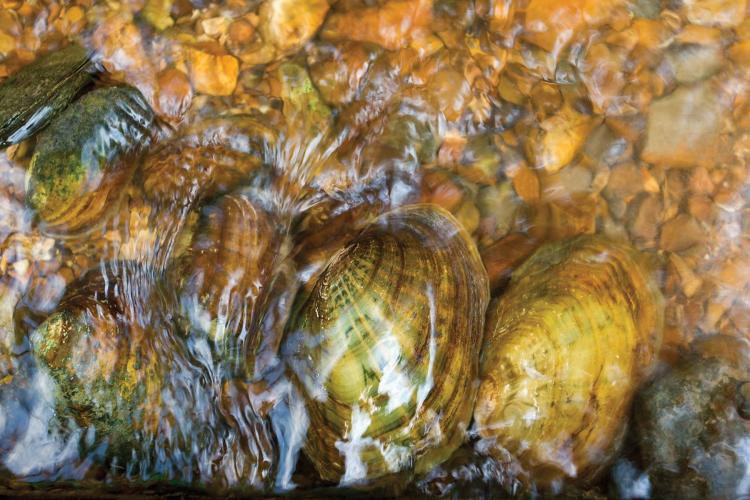
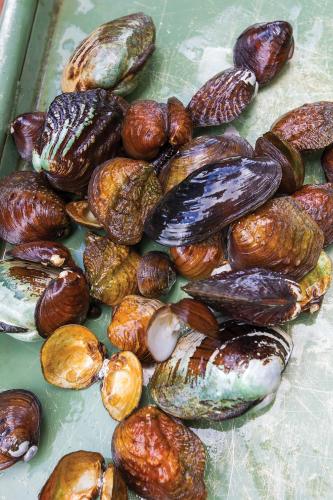
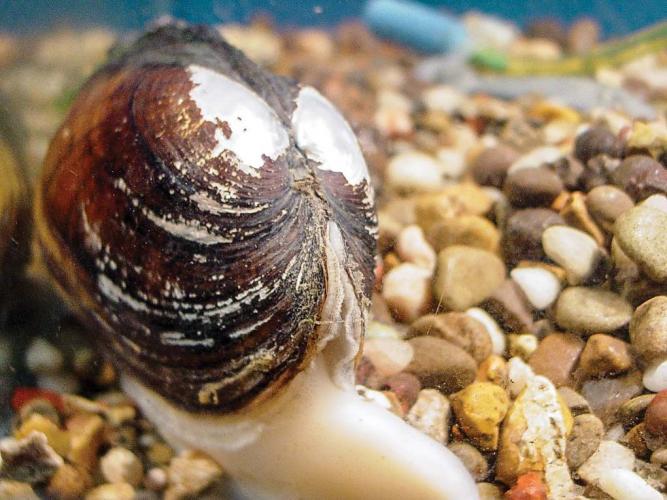

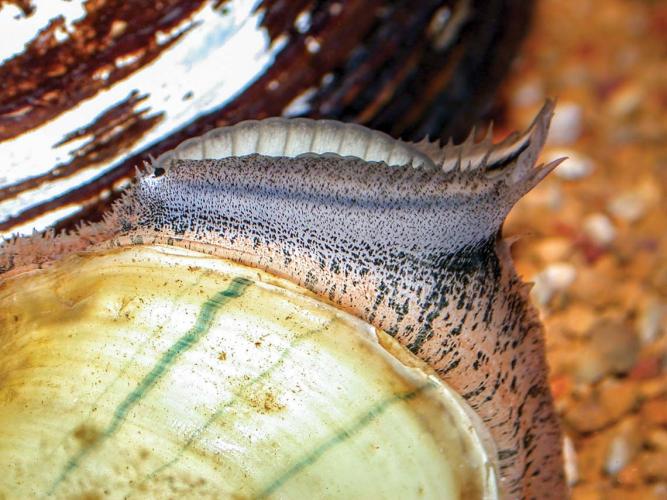

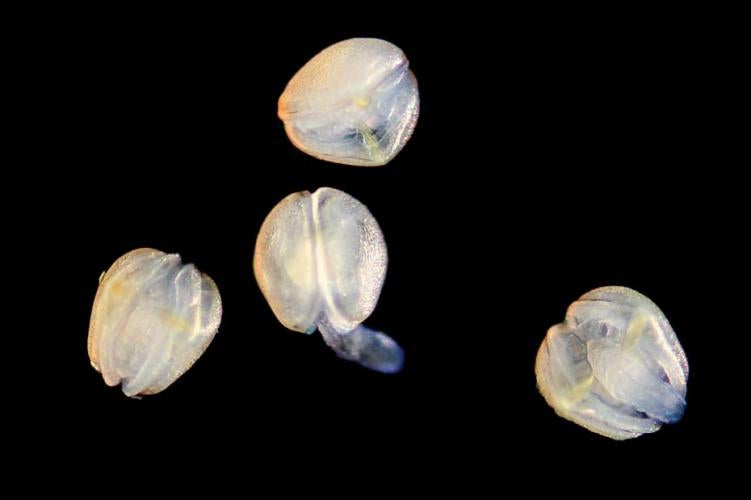

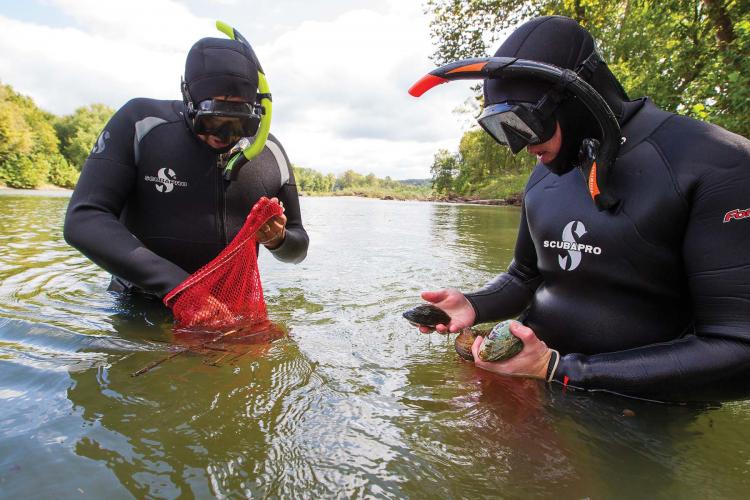
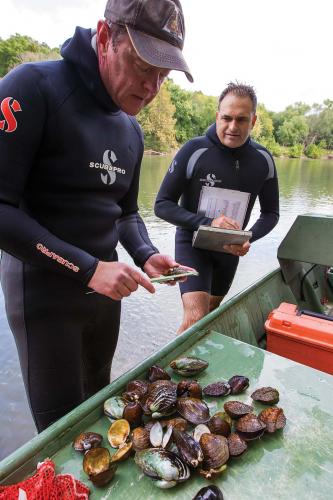

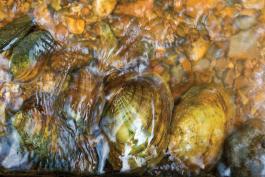
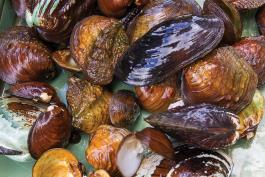
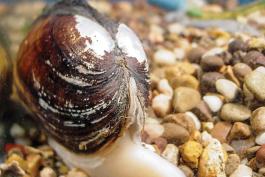
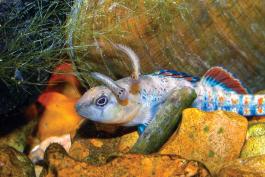

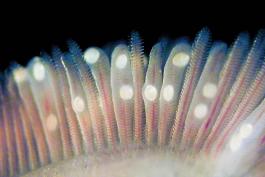
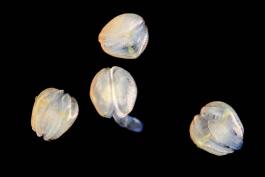
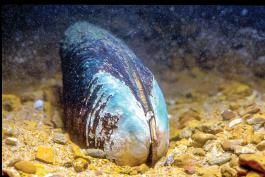
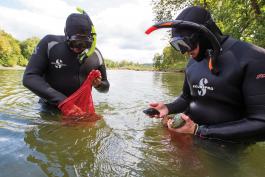
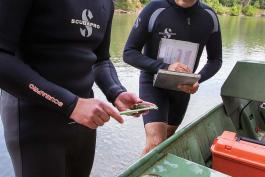

And More...
This Issue's Staff
Art Director - Cliff White
Associate Editor - Bonnie Chasteen
Staff Writer - Heather Feeler
Staff Writer - Kristie Hilgedick
Staff Writer - Joe Jerek
Photographer - Noppadol Paothong
Photographer - David Stonner
Designer - Les Fortenberry
Designer - Marci Porter
Designer - Stephanie Thurber
Circulation - Laura Scheuler






















